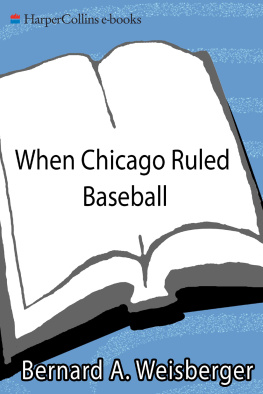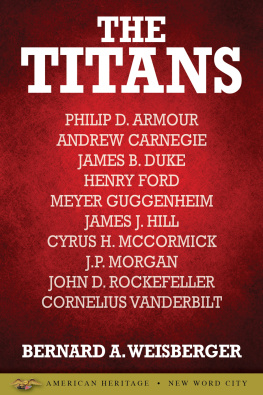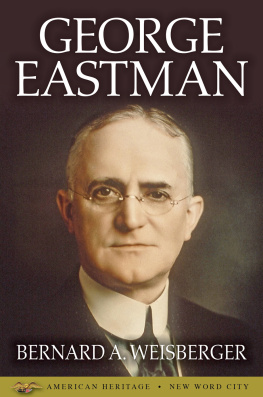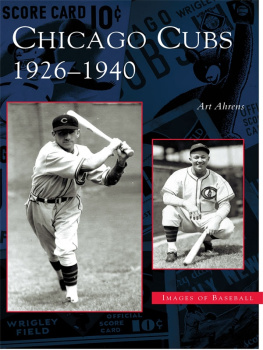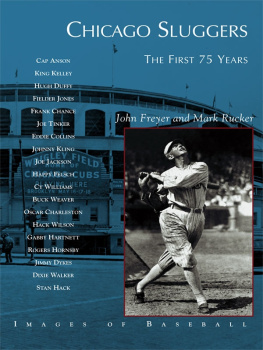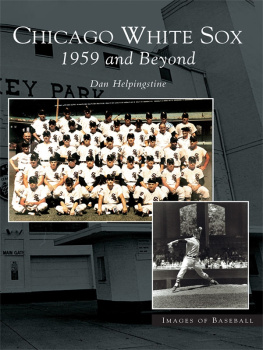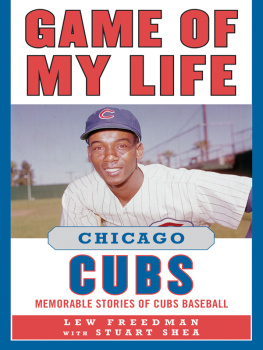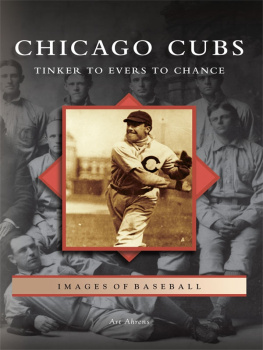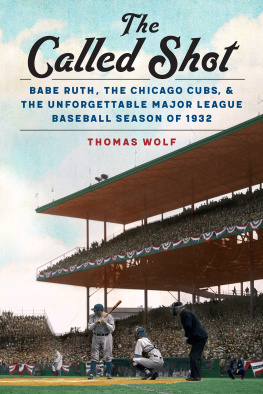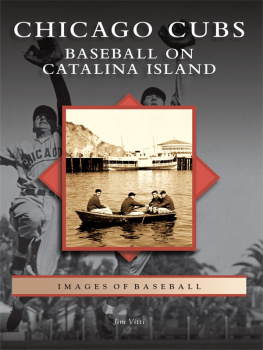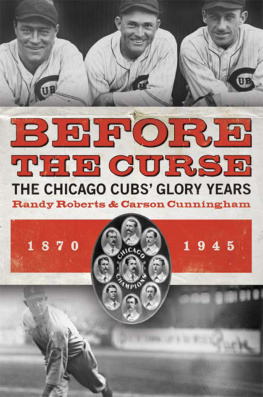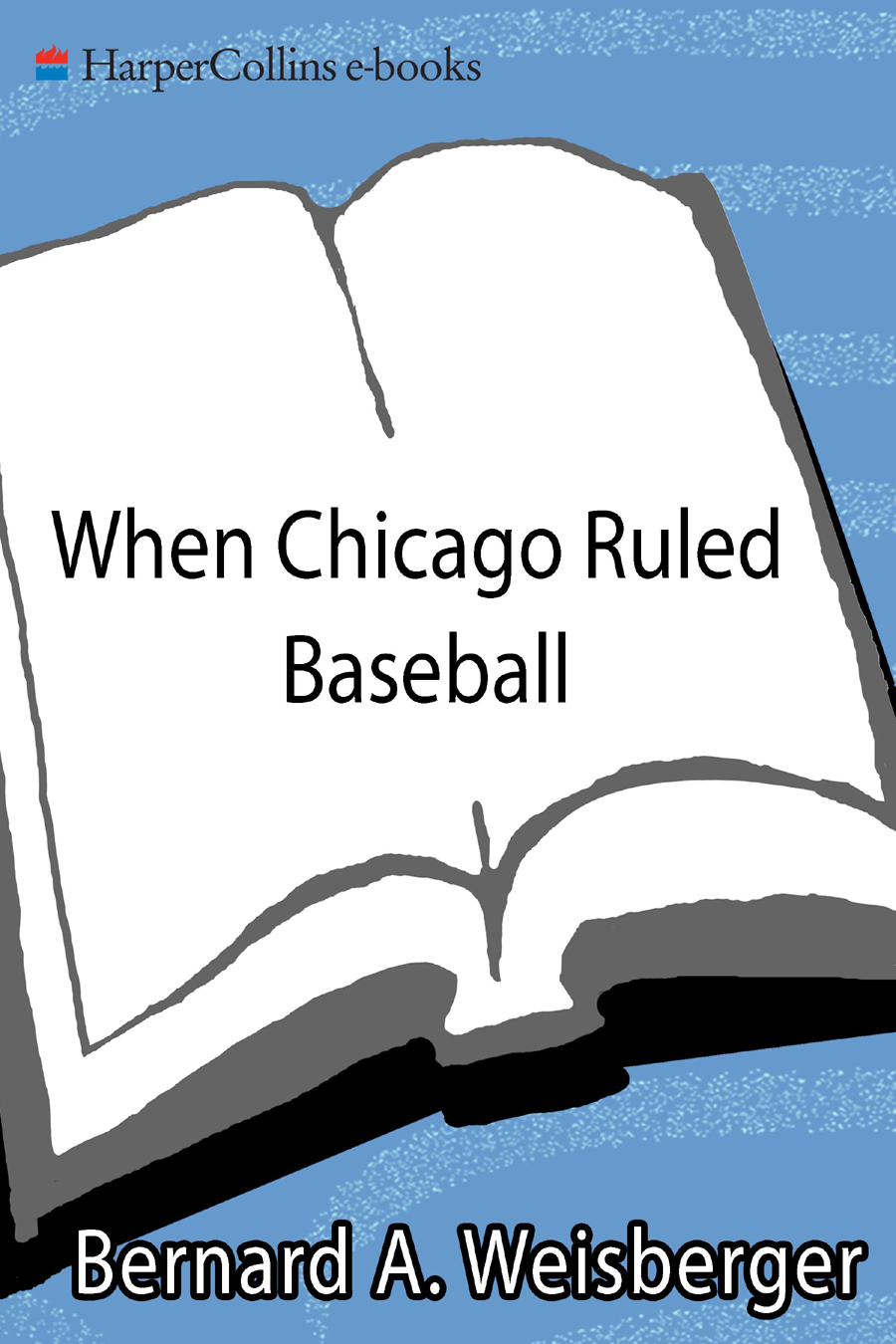Bernard A. Weisberger
Chapter 1
Opening Day
C hicago, Tuesday, October 9, 1906. From the standpoint of baseball weather, the outlook was rotten. Frigid blasts that gave Chicago its unflattering Windy City nickname whipped through the streets. A pale sun fought a losing battle with clouds that now and then spat snow flurries. If quality play was expected, the day almost shouted for a postponement.
But nothing short of a blizzard, or an earthquake like the one that had destroyed San Francisco that spring, or a renewal of the Great Fire that had left Chicago a pile of smoking ashes just thirty-five years earlier to the day was going to postpone the big event. Chicago, rebuilt and renowned, was going to strut. It was opening day of the World Series, and both contending teams, champions of the thirty-year-old National League and its five-year-old American League rival, were from Chicago. And so, in the plummy prose of Chicago Tribune sportswriter Hugh Fullerton a few days earlier, Since last night a combination pennant pole marking the site of Chicago has served as the earths axis, and around it something less than 2,000,000 maddened baseball fans are dancing a carmagnole of victory.
The earth on the whole was unaware of the relocation of its axis. World Series? Probably 99 percent of the earths peoples at that time had never seen, heard of, or cared about the game of baseball. But in Chicagoan eyes, baseball was the national pastime of the United States of America, and by definition a contest for its professional championship had to be earth altering. So Chicago was collectively excited, even if not every one of its slightly fewer than 2 million inhabitants could tell a carmagnole (a dance popular during the French Revolution) from a catchers mitt.
The anticipation had been building for the six days since it became certain that both of Chicagos teams were pennant winners. The towns major daily newspapers (in those preconsolidation days of 1906, there were some nine in English and an equal number in German, Yiddish, Czech, Norwegian, and one or two other languages) gave baseball front-page coverage, beginning on Thursday and with the volume increasing over the weekend. The Tribune devoted most of its Sunday sporting section to a long review of the championship seasons of both White Sox and Cubs. It shared space with coverage of Saturdays Big Ten college football matchupsbaseballs only serious rival for attention back then. But college football appealed mostly to college graduates, an influential but still miniature slice of the population. Americans without higher education, however, had taken the diamond game to heart by the millions. They wanted a steady and generous diet of baseball scores, standings, and gossip in the daily papers that plugged them into the world (at 2 cents a copy), and publishers fed it to them willingly and profitably.
Front-page editorial cartoons, usually political, were temporarily shelved in favor of baseball gags: baseballs with smiley faces, deliriously happy fans and families, the latter including pets and babies. Two in particular carried implicit social messages. One, a story in four panels appearing in the Tribune , introduced a pair of characters already familiar from the comic strips: the boss and the office boy. The boss corners the reluctant youngster, who is planning to sneak away, and demands that the boy do something for him that afternoon, which happily turns out to be to go to the ball game with me and explain the finer points. The lesson was that first, there were fine points to the game that made it a craft worth studying and not an idle pastime, and second, that mutual delight in Chicagos baseball prowess bound together generations and classesbenign old employer and lowly kid jobholder. In that simple form the text was clear even to the barely literate reader.
Compared to that theme of harmony, one of the Daily News s pregame cartoons radiates realism. The image of Mrs. OLearys angry cow starting the Great Fire of 1871, as legend had it, by kicking a lighted lantern into a pile of straw is succeeded by the Mild and Gentle Animal of Today wearing a contented grin as uniformed Cubs and Sox players cheerfully milk her into a bucket stamped with a large, eye-catching dollar sign. Whatever else professional baseball bestowed on society at large, it was a business whose chief end and aim was to generate cash.
That contradiction between baseballs public face as the simon-pure recreational expression of the American spirit and the reality of big-league, big-city baseball as a market enterprise (and a monopoly at that) anchored in a growing commercial entertainment industry and culturethat discord between image and realityis clear in any hard-eyed look at that 1906 crosstown series in a Chicago banging and barging its metropolitan way into a new century. Its a sports story that helps to explain how we American urbanites have come to be who we are and how we see ourselves.
But songs of social significance arent the only music of baseball history. The Series itself was wonderfully exciting, an electric week of surprises, thrills, exploits and errors, hopes roused and hopes dashed. For those who were there, time was suspended, the world outside the playing field faded into the background, and individual problems were forgotten in the single, roaring life of the crowd riding the same emotional roller coaster with every swing and every pitch. That is what any popular spectator sport still does for its fans. In America, baseball did it first.
It was a different world then. But a lover of baseball in 2006 isnt all that estranged from the grandstand throngs caught in those grainy black-and-white news photos of a century ago. We know more than we want to now about the private sins of the players, about multimillion-dollar payrolls and agents and unions and TV revenue sharessometimes its hard to tell the sports pages from the business news. We follow our game through a welter of background noise from other athletic goings-on that now have equal or better claims to be the national pastime.
But we stay tuned and, when we have the chance, spend an extravagant afternoon or evening at the new stadiums built especially to cater to the luxury-box crowd, because we find the game between the foul lines beautiful. It wasnt any less so then. So in the pages that follow, the contests themselves are always the place to which the story returns after digressions and excursions into history. The narrator hopes that his readers will be a little wiser and sadder, perhaps, but still eager for the on-field action to startjust like those crowds heading for Game One, one hundred years ago, via four converging streetcar lines and two elevateds. Two hours before the entry gates opened at noon they were already shivering and stamping in line before the ticket windows. Who were they, and what was the Chicago of their day like? And what form would the first-ever intracity World Series take?
The opener would be at the Cubs park, as determined by a coin toss at a meeting the day before. In attendance were both teams, their owners, and the three-man National Commission that then ruled organized baseball. It consisted of the presidents of both leagues and a third member chosen by them. The games would alternate between the two contestants parks until one of them had won four. No final decision was made that day as to who would be home team for the deciding game if the Series reached a 33 tie. There was a possibility of moving it to a neutral site, and bids were actually made by at least two other cities, but relieved Chicago fans saw that idea shot down early. Other points that were settled raised ticket prices to double the regular season ratesSeries seats would cost 50 cents for the bleachers, $1 or $1.50 for the grandstand and pavilion and $2 for boxes. These hikes were imposed over the objection of White Sox owner Charles Comiskey, who argued that they were hard on his regular patrons with small incomes. His complaints do not seem groundless considering that thanks to inflation, a 1906 dollars purchasing power in 2006 would range somewhere between $14 and $20. That was the real price of a $1 grandstand seat back then. And since blue-collar Chicagoans of 1906 worked an average ten-hour day to earn just $2 or $3, a 100 percent hike in admission fees was no light matter.

